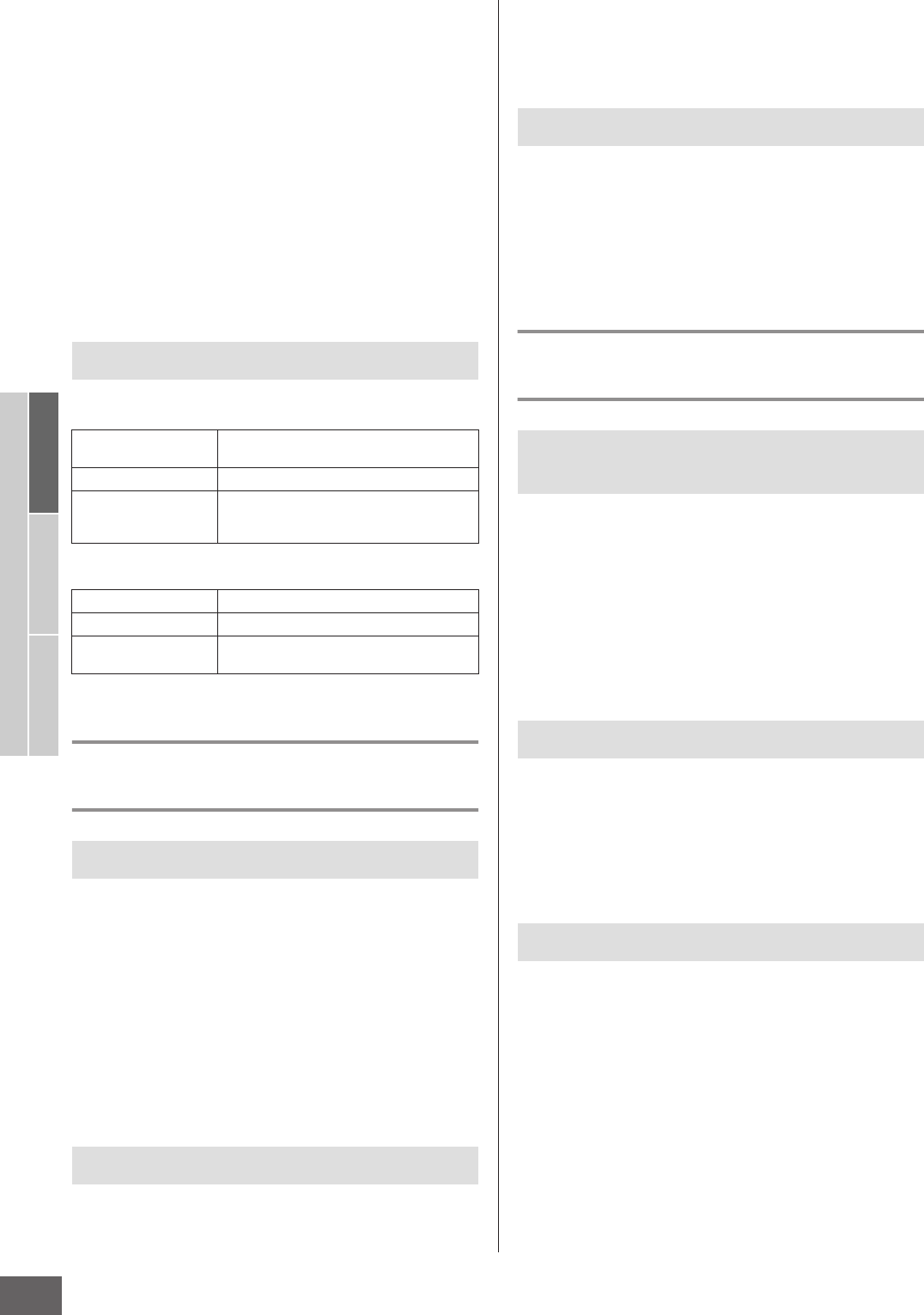
Basic Structure Basic Operation
Connections
Basic Section
Basic Structure
MOTIF XS Owner’s Manual
58
Amplitude related parameters can be set in the Amplitude
display (pages 122 and 131), Amplitude EG display
(page 123) and Amplitude Scale display (page 124) of the
Voice Edit mode.
LFO (Low Frequency Oscillator)
As its name suggests, the LFO produces a wave of a low
frequency. These waves can be used to vary the pitch,
filter or amplitude of each Element to create effects such as
vibrato, wah and tremolo. LFO can be set independently
for each Element; it can also be set globally for all
Elements.
LFO related parameters can be set in the Common LFO
display (page 105) and the Element LFO display
(page 125) of the Voice Edit mode.
Normal Voice
Drum Voice
Tone Generator block in the
Performance Mode
In this mode, the tone generator block receives MIDI data
over a single channel. This status is referred to as a “single
timbre” tone generator. This mode lets you play a
Performance (which multiple Voices (Parts) are
combined—in a layer, or in other configurations) using the
keyboard.
Keep in mind that song data on an external sequencer
consisting of multiple MIDI channels will not play back
properly in this mode. If you are using an external MIDI
sequencer or computer to play the instrument, make sure
to use the Song mode or Pattern mode.
A program in which multiple Voices (Parts) are combined in
a layer, or in other configurations is referred to as a
“Performance.” Each Performance can contain up to four
different Parts (Voices). Each Performance can be created
by editing parameters unique to each part and parameters
common to all the Parts.
Three User Banks are provided. Each Bank contains 128
Performances. Accordingly, a total of 384 User
Performances are provided. These 384 Performances are
preprogrammed by default and can be changed in the
Performance mode.
Tone Generator block in the Song
mode/Pattern mode
In these modes, multiple Parts are provided and different
Voices and different melodies or phrases can be played
back for each Part. Because these modes let you set the
MIDI channel for each part of the tone generator block, you
can use an external MIDI sequencer as well as the
sequencer block of the instrument to play the sounds. The
sequence data of each track plays the corresponding
Parts (those having the same MIDI channel assignment) in
the tone generator block.
A program in which multiple Voices are assigned to Parts
for multi-timbral play in the Song and Pattern modes is
referred to as a “Mixing.” Each Mixing can contain up to 16
parts. Each Mixing can be created by editing parameters
unique to each Part and parameters common to all the
Parts in the Mixing mode (page 233).
A Mixing program is provided for each Song or Pattern.
Selecting a different Song/Pattern calls up the different
Mixing program.
Song mode
64 Mixing settings (one Mixing for each Song)
Pattern mode
64 Mixing settings (one Mixing for each Pattern)
Memory structure of Voice
Preset Banks 1 – 8 1024 Normal Voices
(128 Voices for each Bank)
GM Bank 128 Voices
User Banks 1 – 3 384 Normal Voices
(128 Voices for each Bank)
(Picked up from Preset Voices by default)
Preset Drum Bank 32 Voices
GM Drum Bank 1 Voice
User Drum Bank 64 Voices
(Picked up from Preset Voices by default)
Part structure in the Performance mode
Performance
Memory structure of Performance
Part structure of the tone generator
block in the Song mode/Pattern mode
About Mixing
Memory structure of Mixing


















